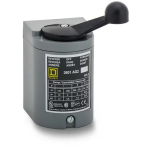SFportTECH
Member
- Location
- San Francisco
- Occupation
- Crane and Elevator Technician
Is there any drawback to creating a forward/reverse pump control circuit using only one contactor, and using a relay that switches two phases back and forth.
I have a pump control panel with two pumps, two contactors, and not enough space in the cabinet to add two more contactors for the traditional way of setting up a forward/reverse circuit using two motor starters for each pump.
I have a pump control panel with two pumps, two contactors, and not enough space in the cabinet to add two more contactors for the traditional way of setting up a forward/reverse circuit using two motor starters for each pump.



